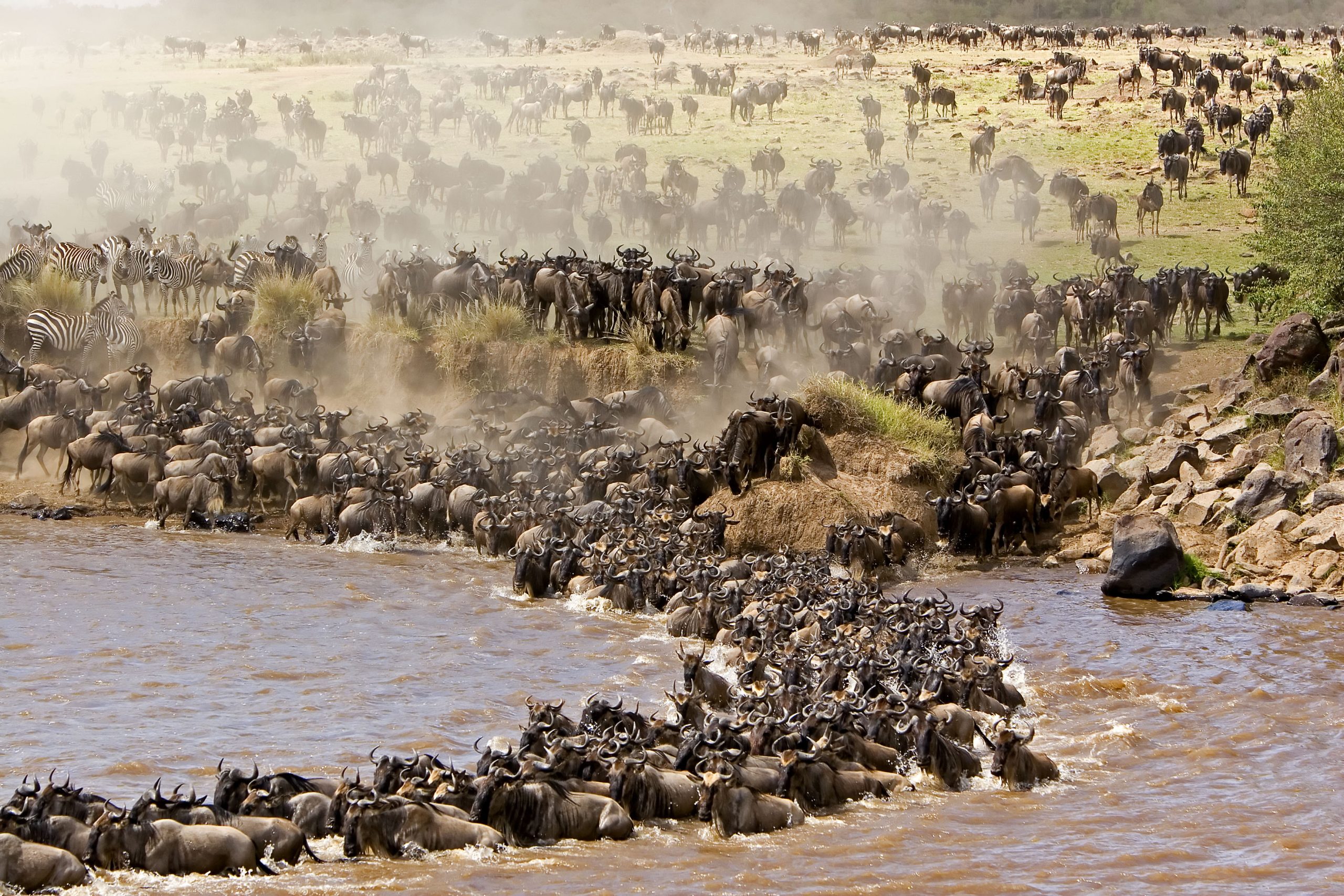Planning a safari in Kenya involves understanding the best times to visit to maximize wildlife viewing opportunities. This guide offers a month-by-month breakdown of Kenya’s seasons, wildlife behavior, and travel tips.
January to March: Dry Season
- Weather: Warm and dry, with temperatures ranging from 20-30°C (68-86°F).
- Wildlife: Excellent time for game viewing, as animals congregate around water sources.
- Highlights:
- Masai Mara: Large herds of elephants and other herbivores.
- Amboseli National Park: Clear skies offer spectacular views of Mount Kilimanjaro.
- Lake Nakuru: Flamingos and other bird species are abundant.
- Tips: Book accommodations and safaris in advance as this is a popular travel period.
April to June: Long Rainy Season
- Weather: Heavy rainfall, especially in April and May. Temperatures remain moderate.
- Wildlife: Lush landscapes, but animals are more dispersed. Birdwatching is excellent.
- Highlights:
- Masai Mara: Calving season for wildebeest and zebras.
- Tsavo East and West: Fewer tourists, offering a more private safari experience.
- Tips: Some roads may be impassable due to rain. Consider 4×4 vehicles for better access. Off-peak rates can make luxury lodges more affordable.
July to October: Peak Safari Season
- Weather: Dry and cooler, with temperatures ranging from 15-25°C (59-77°F).
- Wildlife: Optimal game viewing, with the Great Migration in full swing.
- Highlights:
- Masai Mara: Witness the Great Migration of wildebeest and zebras crossing the Mara River.
- Samburu National Reserve: High chances of spotting the “Samburu Special Five” (Grevy’s zebra, Somali ostrich, reticulated giraffe, gerenuk, and Beisa oryx).
- Laikipia Plateau: Rhino tracking and other Big Five sightings.
- Tips: This is the busiest time, so book your safari and accommodations well in advance. Prices are higher, but the experience is unparalleled.
November to December: Short Rainy Season
- Weather: Short, sporadic rains with temperatures around 20-28°C (68-82°F).
- Wildlife: Green landscapes and good wildlife viewing, though animals may be more scattered.
- Highlights:
- Nairobi National Park: Good game viewing close to the city.
- Aberdare National Park: Spotting elephants and buffalo in lush forests.
- Diani Beach: Combine safari with coastal relaxation.
- Tips: The short rains don’t typically disrupt travel plans too much. This period can be a great time for birdwatching as migratory birds arrive.
Additional Travel Tips
- What to Pack: Light clothing for the day, warm layers for early morning and evening game drives, waterproof gear during rainy seasons, binoculars, camera, insect repellent, sunscreen, and a good hat.
- Health and Safety: Ensure vaccinations are up-to-date and consider anti-malarial medication. Drink bottled or treated water.
- Visas and Documentation: Check visa requirements for your nationality and ensure your passport is valid for at least six months beyond your intended stay.
- Local Customs: Learn a few Swahili phrases, respect local traditions, and adhere to park rules to ensure a safe and enjoyable experience for everyone.
By understanding the best times to visit Kenya for safaris, travelers can plan their trips to coincide with optimal wildlife viewing conditions, ensuring a memorable and rewarding experience.y of options to suit your needs. Remember to always compare prices and check for promotions to ensure you get the best value for your money when looking for Best time to visit kenya for safaris.





